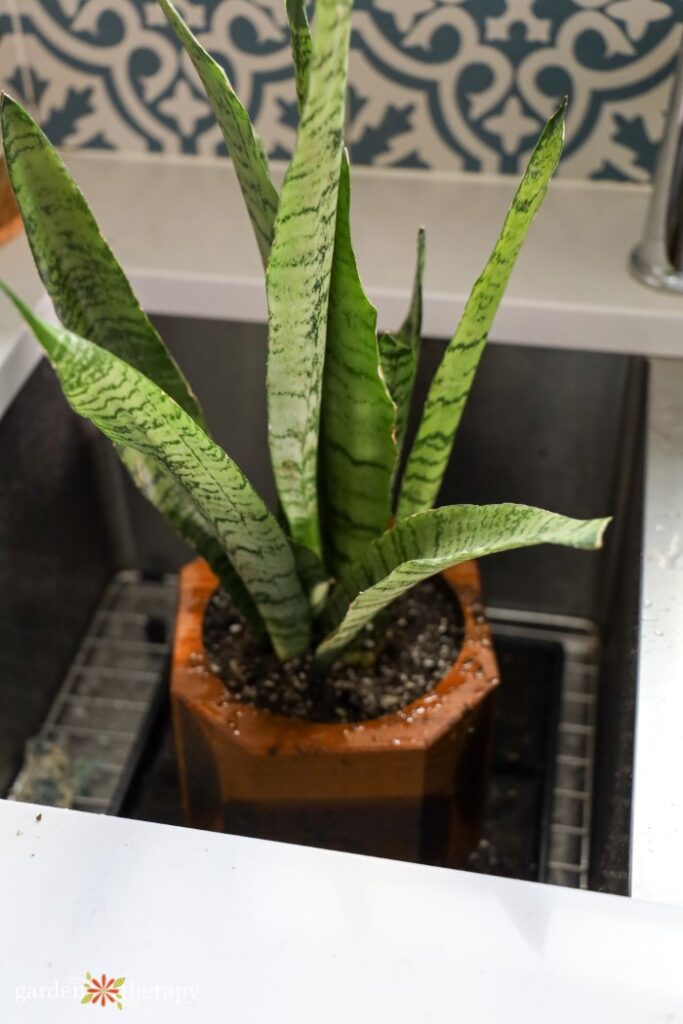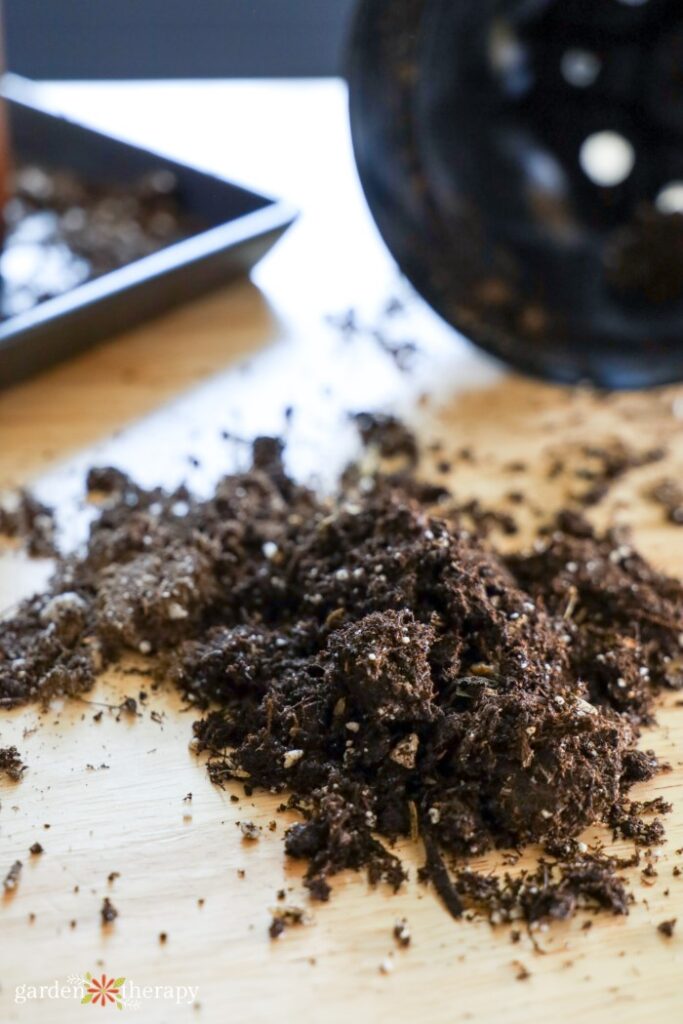If you’ve been looking for a low-maintenance addition to your indoor garden, the snake plant is perfect for you. Its sturdy, sword-like leaves and variety of colours can make a huge statement while still being a stress-free companion. If you are or know a plant killer, you’ll love this plant. Below I’ll share all you need to know to keep a snake plant happy in your home—anyone can do it!

Meet the Snake Plant
The snake plant, or Dracaena trifasciata, is a flowering plant native to tropical regions in Western Africa, from Nigeria to the Congo. This hearty plant can withstand a range of conditions and still flourish. These spiky plants grow anywhere from six inches to eight feet tall!
Its dagger-like leaves have earned it nicknames such as Saint George’s Sword and Mother-in-law’s Tongue (Ha! Now that’s a good one), but don’t let the nicknames fool you. The snake plant is perfect for even beginning plant-enthusiasts as it’s quite forgiving and easy to care for. You can even propagate the plant to have even more snake plant babies for yourself or to give to friends. Are you sold yet?
This post will cover…
- Meet the Snake Plant
- Snake Plant Care
- Location
- Sun
- Water
- Soil
- Fertilizer
- Common Issues
- Snake Plant Propagation
- Frequently Asked Questions About Snake Plants
- More Posts About House Plants

Snake Plant Care
While these plants are very beginner-friendly and can survive most conditions, we still want them to thrive, don’t we? With these care tips, your snake plant will be one happy little house plant.
Location
The snake plant is easy to please. They’ll love a bright window, but they’ll also love your desk, a hallway, or a bathroom, so you can place them almost anywhere in your house.
If you’re a frequent traveller or, like me, sometimes a bit forgetful of your indoor plants, the snake plant won’t mind at all. It is both hearty and resilient, happy to hang out and do its own thing if left alone for a short time.
Sun
In the snake plant’s perfect world, it’ll be in bright, indirect light. But don’t worry—the plant isn’t picky. It can tolerate a little direct sunlight and even low light conditions, but you’ll see it grow fastest in a bright room.
If you have a room that is particularly dim, consider one of these houseplants that love low light.

Water
You won’t need a lot of water to keep your snake plant happy. Hello, water conservation! These plants like to dry out a little between waterings. In the warmer months, you should only have to water your plant once every couple of weeks.
In the winter, they can stay dormant for up to two months without water and still survive. Make sure you give your soil a quick touch test to avoid soaking the roots—the top inch of soil should be dry before watering—as these plants do not like to be soggy.
Soil
A well-draining soil for houseplants will be your snake plant’s best friend since these plants don’t like to sit in any water. Make sure your pot has a nice drainage hole, and you should be all set to pot your snake plant in its new home.
Fertilizer
Because the snake plant doesn’t need much to be happy, it also won’t eat up all your fertilizer. It only needs fertilization a couple of times during its growing season in spring and summer!

Common Issues
Snake plants are pretty happy in most conditions, but sometimes things go wrong. If you notice your plant start to droop, move it into a brighter spot and it should straighten up in no time. If you’ve been overwatering your plant, you’ll know by the leaves—they will go soft and mushy if the plant is too wet, or they could start to yellow.
And of course, the dreaded brown spots. If you notice your snake plant is browning on the leaves, don’t panic! This is likely a temperature issue. Both too-cold and too-warm temperatures will cause browning on your snake plant. If you see this happen, snip the affected leaves near the soil with a clean pair of scissors and move the plant into a colder or warmer room.

Snake Plant Propagation
The snake plant is a generous multiplier and will easily propagate in two ways. To propagate from a cutting, choose a relatively young, healthy leaf on your plant and cut it off with a clean pair of shears. In a small container, place the cutting cut-side down and fill the container with just enough water to cover the very bottom of the cutting. Keep it in indirect light, changing the water every few days, and transport it into fresh soil once you see roots start to grow.
You can also propagate the snake plant by splitting or dividing it. Once your snake plant grows to be quite full in its pot, you might start to notice that it looks like more than one plant. Gently remove the plant from its soil, brush soil away from the roots, and look to find smaller sections of the snake plant that are their own unit.
Using a sharp knife, cut one of the smaller units free from the main plant, keeping a good section of roots intact on the new plant, and transplant it into fresh soil in its own pot. Then return the original plant back to its pot, filling in the hole with soil.

Frequently Asked Questions About Snake Plants
The snake plant needs very little light to stay alive, but it does prefer brighter locations. It is a tropical houseplant, not unlike a succulent, and will grow the quickest in bright, indirect sunlight. But don’t let that deter you if you have a slightly dimmer home. This plant will happily live in lower-light conditions too!
On top of being a low-maintenance, beginner, and plant-killer-friendly house plant, the snake plant is good for your air, too! These spiky plants can absorb and filter toxins in the air and convert CO2 to oxygen at night.
These plants are toxic when consumed. They should be kept away from nibbling pets and children. See which other houseplants are toxic for pets here.

What are you waiting for? Go ahead and grab yourself a snake plant all for yourself! Let me know in the comments down below if you have any more questions about caring for your new plant baby.




